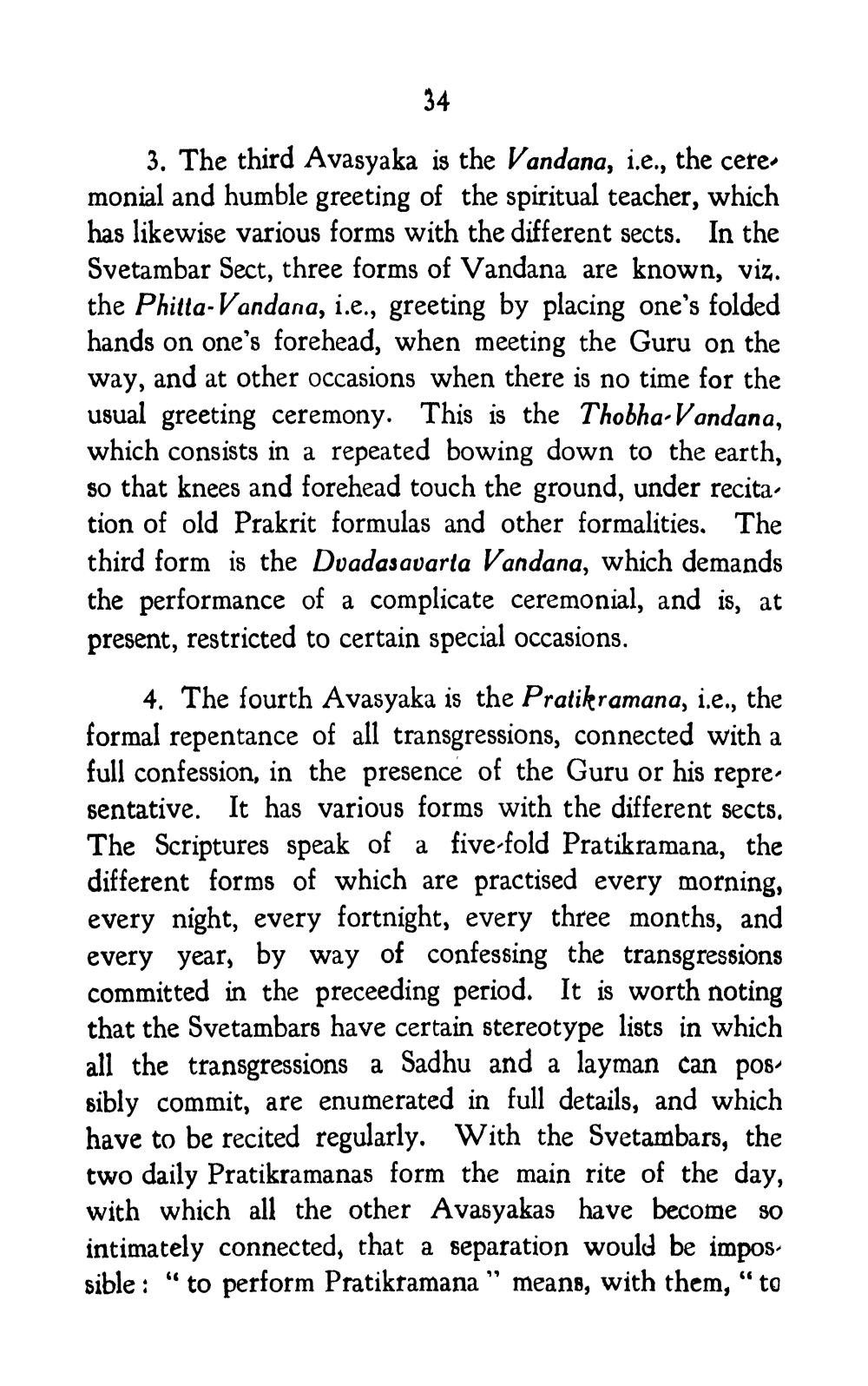________________
3. The third Avasyaka is the Vandana, i.e., the cere. monial and humble greeting of the spiritual teacher, which has likewise various forms with the different sects. In the Svetambar Sect, three forms of Vandana are known, viz. the Phitta-Vandana, i.e., greeting by placing one's folded hands on one's forehead, when meeting the Guru on the way, and at other occasions when there is no time for the usual greeting ceremony. This is the Thobha-Vandana, which consists in a repeated bowing down to the earth, so that knees and forehead touch the ground, under recita. tion of old Prakrit formulas and other formalities. The third form is the Duadasavarta Vandana, which demands the performance of a complicate ceremonial, and is, at present, restricted to certain special occasions.
4. The fourth Avasyaka is the Pratikramana, i.e., the formal repentance of all transgressions, connected with a full confession, in the presence of the Guru or his repre. sentative. It has various forms with the different sects. The Scriptures speak of a five-fold Pratikramana, the different forms of which are practised every morning, every night, every fortnight, every three months, and every year, by way of confessing the transgressions committed in the preceeding period. It is worth noting that the Svetambars have certain stereotype lists in which all the transgressions a Sadhu and a layman can possibly commit, are enumerated in full details, and which have to be recited regularly. With the Svetambars, the two daily Pratikramanas form the main rite of the day, with which all the other Avasyakas have become so intimately connected, that a separation would be impossible: “to perform Pratikramana " means, with them, “to




